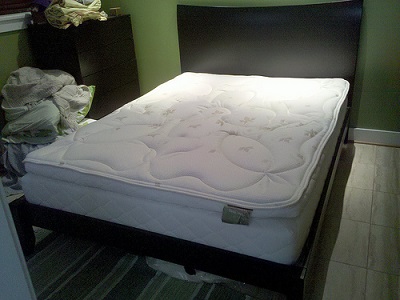
-
 MENU
MENU
- Why Does The Mattress You Choose For Your Kids Matter So Much? 30 Mar 2016
- Bring A Modern Bunk Bed Into Your Your Kids' Bedroom! 22 Mar 2016
- 6 Bunk Bed Plans That Can Help You Maximize On Space 14 Mar 2016
- Safety Features You Should Look For In Bunk Beds 04 Mar 2016
- Use The Right Mattress To Improve The Quality Of Sleep For Your Child 27 Feb 2016
Our Blog
Why Does The Mattress You Choose For Your Kids Matter So Much?
It is common for parents to focus on bed frames, comforters, bed sheets and duvets when it comes to kids’ bedroom affairs. This is unfortunate because as you are about to find out, no item in your child’s bedroom is more important than the mattress. The mattress simply has a direct link to the health and wellness of your loved one. It is easy to understand how. Children sleep deeper and longer than adults. Adequate hours of sleep therefore translate to improved attention spans, decreased stress levels and improved memory. So what kind of factors should one take into account when buying kids mattresses in Toronto and beyond? Read on to find out!
Type of mattress

Mattress type simply refers to the kind of support your preferred mattress offers. Different mattress types simply offer different levels of support and comfort. A spring foam kids mattress will for instance offer a different kind of support when compared to a water mattress. To further understand support and comfort, one has to take into account the different types of support offered by different children mattresses.
• Innerspring open coil - Otherwise referred to as the basic innerspring mattress, the innerspring open coil is ideal for anyone on a tight budget. It is averagely priced, durable and easy to maintain. It offers maximum back support for children under the age of 14. There’s one downside with the innerspring open coil though. It can only support the weight of small children. Anything beyond that can easily mean that the mattress will wear out before its time.
• Innerspring pocket coil - It is more expensive than the aforementioned innerspring open coil mainly because of its design. With the innerspring pocket coil, each spring or coil is separately wrapped in fabric. This simply means that the coils cannot share load or pressure. The mattress therefore contours easily to the body and offers maximum support. It is ideal for children of all ages.
• Memory foam - Memory foam mattresses for both adults and children can be divided into two categories. There’s the low density memory foam mattress and the high density memory foam mattress. High density is designed to respond to body heat. It also takes a few minutes to mold to the shape of one’s body. Low density foam mattress on the other hand is designed to react to pressure. It mold and springs back to its original shape faster than high density memory foam mattress when no one is lying on it. Low density mattresses are recommended for children. That’s simply because high density foam mattresses can easily cause back discomfort when used for long.
Mattress comfort levels
You may not know it but mattress comfort levels range from plush (or very soft) to very firm. Different manufactures use different strategies to achieve different comfort levels. Your best bet is to simply find a manufacturer known for their high comfort levels when it comes to children mattresses. Note that the different comfort levels simply refer to the amount of cushioning in a mattresses on top of the support structures used.
Posture
Posture matters a lot when it comes to children mattresses. Research shows that contoured sleeping surfaces can help one maintain his or her spine in a straight line. This is also true for children. Because the body is naturally curvy, firmer mattresses may cause you to strain. Not so with plush mattresses as they can easily mold into your body contours. For extra comfort, consider extra padding where appropriate. Then be keen when your young one starts adding weight. Extra weight on a weak mattresses can easily cause mattresses to form a concave shape, a factor that has been linked with curvatures of spines and several other back problems.


